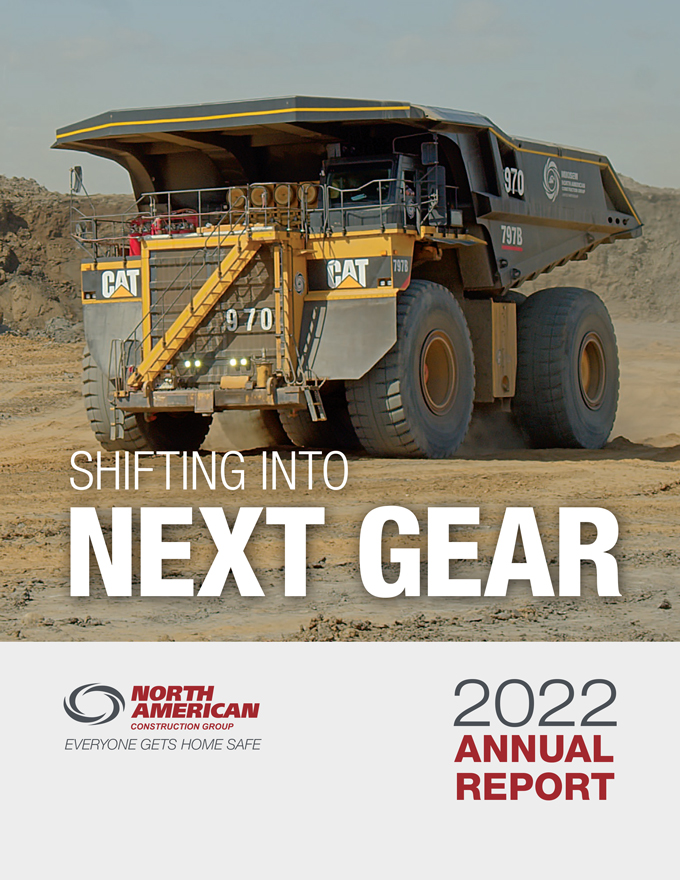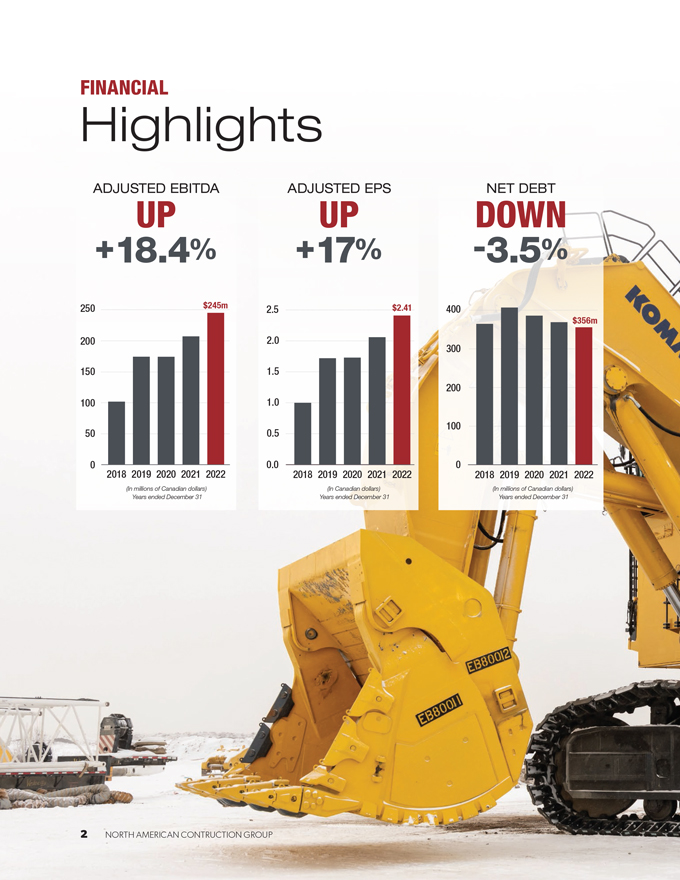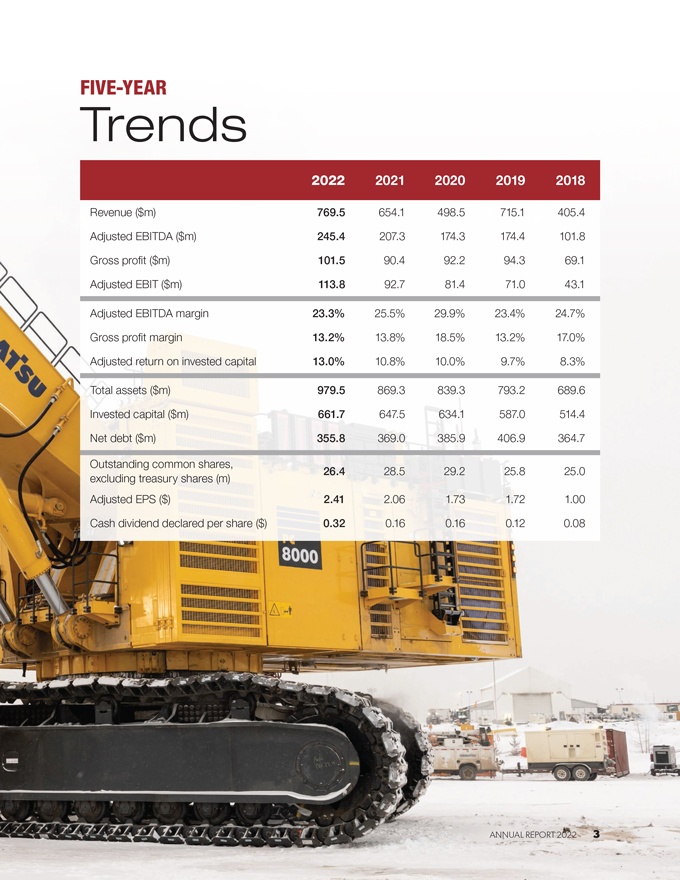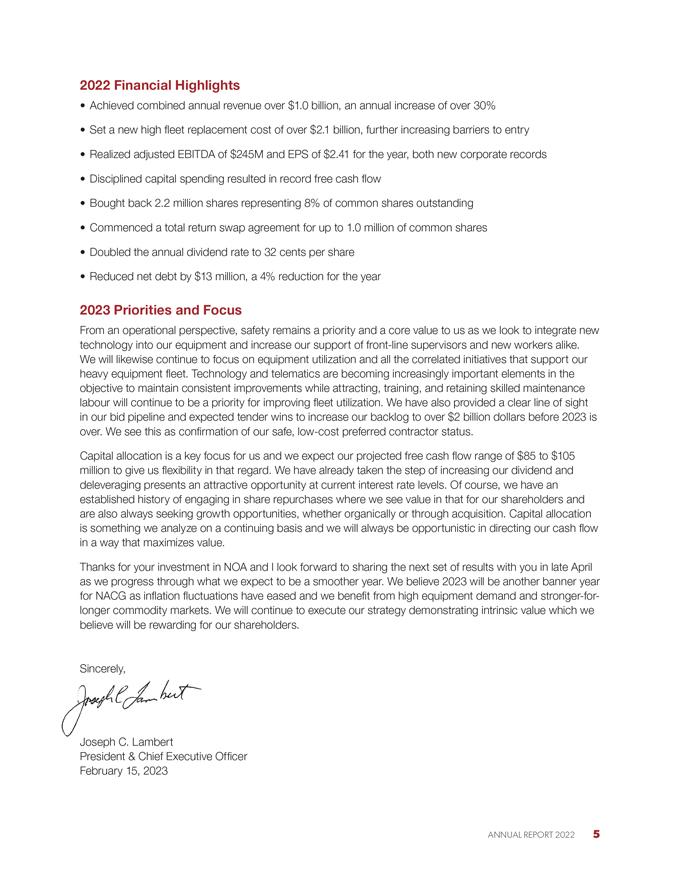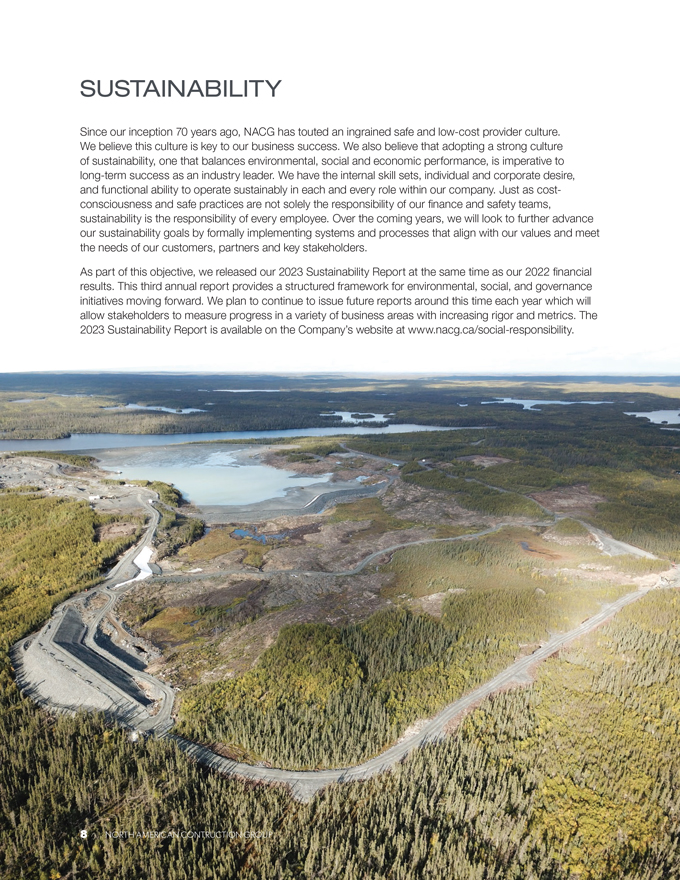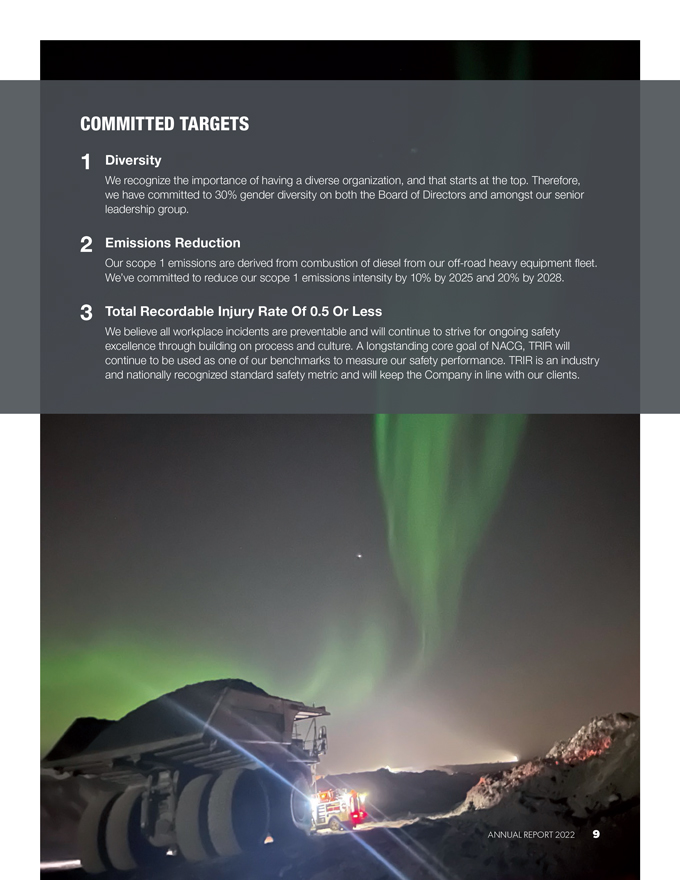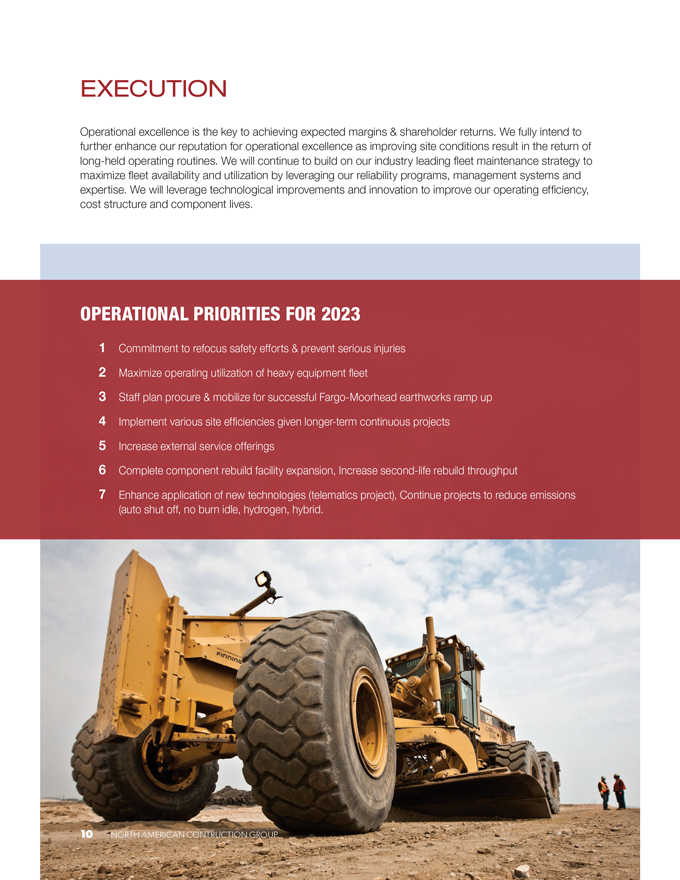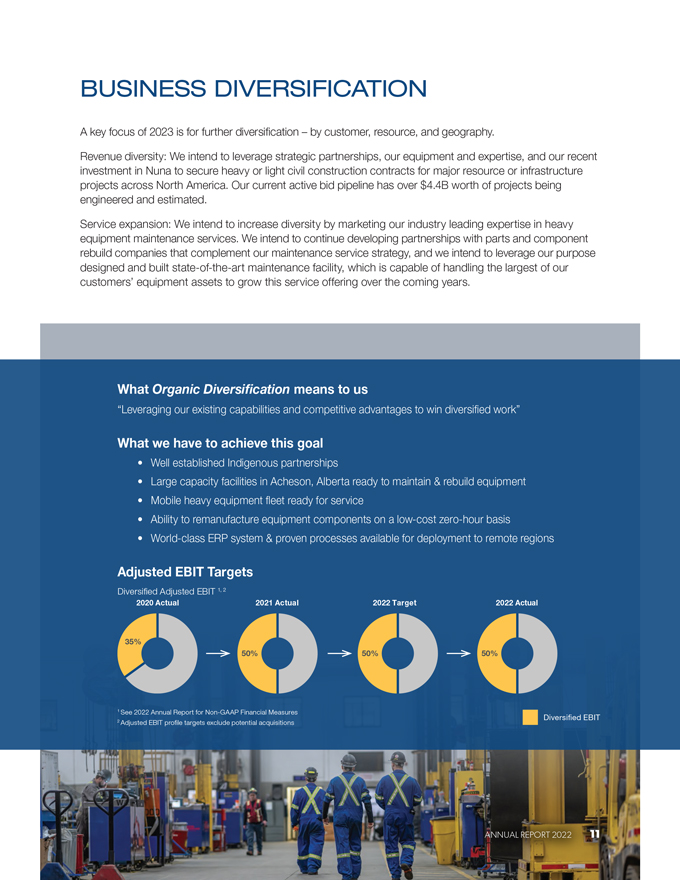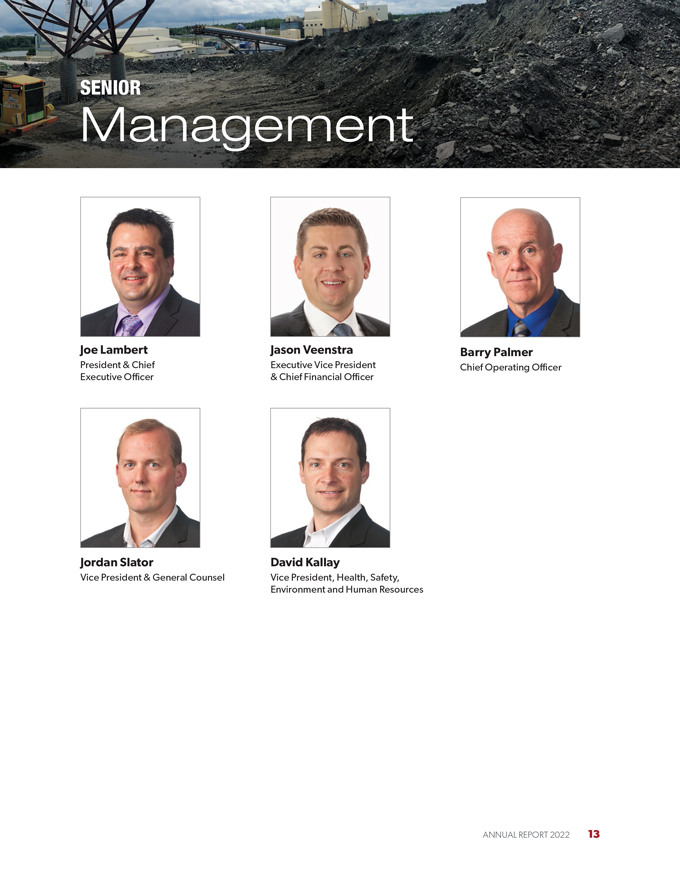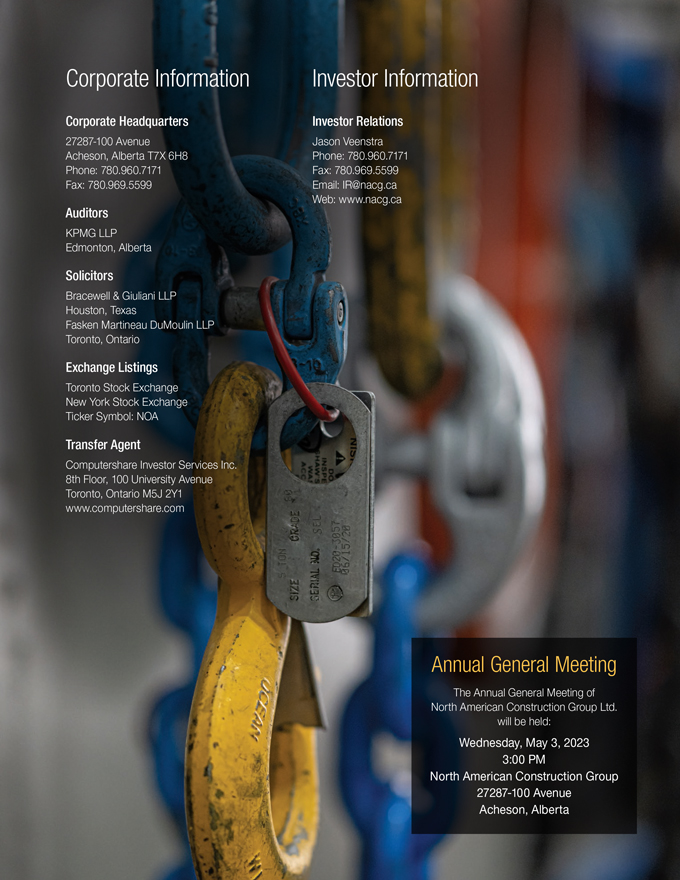“Cash provided by operating activities prior to change in working capital” is defined as cash used in or provided by operating activities excluding net changes in non-cash working capital.
“Free cash flow” is defined as cash from operations less cash used in investing activities including finance lease additions but excluding cash used for growth capital. We believe that free cash flow is a relevant measure of cash available to service our total debt repayment commitments, pay dividends, fund share purchases and fund both growth capital expenditures and potential strategic initiatives.
“Backlog” is a measure of the amount of secured work we have outstanding and, as such, is an indicator of a base level of future revenue potential. We define backlog as work that has a high certainty of being performed as evidenced by the existence of a signed contract or work order specifying expected job scope, value and timing. Backlog, while not a GAAP term is similar in nature and definition to the “transaction price allocated to the remaining performance obligations”, defined under US GAAP and reported in “Note 5 – Revenue” in our financial statements. When the two numbers differ, the variance relates to expected scope where we have a contractual commitment, but the customer has not yet provided specific direction.
“Equity method investment backlog” is a measure of our proportionate share (based on ownership interest) of backlog from affiliates and joint ventures that are accounted for using the equity method.
“Combined backlog” is a measure of the total of backlog from wholly-owned entities plus equity method investment backlog.
“Growth capital” is defined as new or used revenue-generating and customer facing assets which are not intended to replace an existing asset and have been commissioned and are available for use. These expenditures result in a meaningful increase to earnings and cash flow potential.
“Sustaining capital” is defined as expenditures, net of routine disposals, related to property, plant and equipment which have been commissioned and are available for use operated to maintain and support existing earnings and cash flow potential and do not include the characteristics of growth capital.
“Capital expenditures, net” is defined as growth capital and sustaining capital. We believe that capital expenditures, net and its components are a meaningful measure to assess resource allocation.
“Capital additions” is defined as capital expenditures, net and lease additions.
“Share of affiliate and joint venture capital additions” is defined as our proportionate share (based on ownership interest) of capital expenditures, net and lease additions from affiliates and joint ventures that are accounted for using the equity method
“Capital inventory” is defined as rotatable parts included in property, plant and equipment held for use in the overhaul of property, plant and equipment.
“Capital work in progress” is defined growth capital and sustaining capital prior to commissioning and not available for use.
Non-GAAP ratios
“Margin” is defined as the financial number as a percent of total reported revenue. We will often identify a relevant financial metric as a percentage of revenue and refer to this as a margin for that financial metric.
“Combined gross profit margin” is defined as combined gross profit divided by total combined revenue.
“Adjusted EBITDA Margin” is defined as adjusted EBITDA divided by total combined revenue.
We believe that presenting relevant financial metrics as a percentage of revenue is a meaningful measure of our business as it provides the performance of the financial metric in the context of the performance of revenue. Management reviews margins as part of its financial metrics to assess the relative performance of its results.
Supplementary Financial Measures
“Gross profit margin” represents gross profit as a percentage of revenue.
“Total net working capital (excluding cash)” represents net working capital, less the cash balance.
| | | | |
| 36 | | NORTH AMERICAN CONSTRUCTION GROUP | | |
